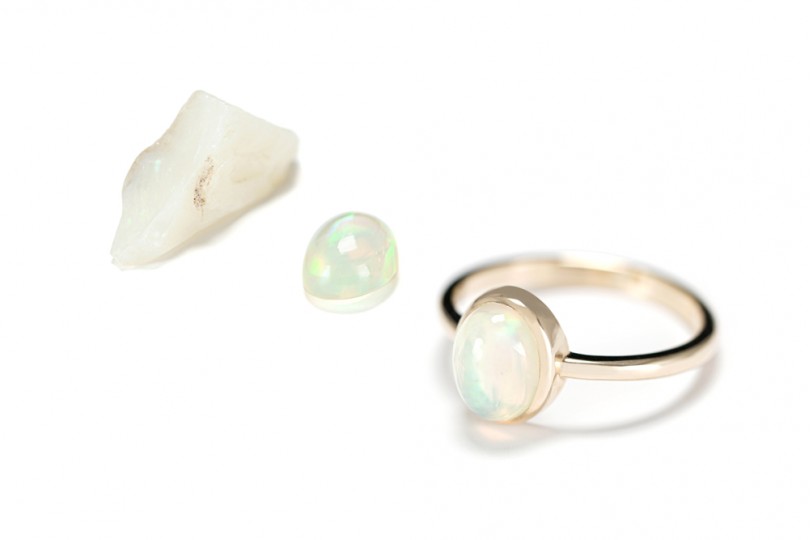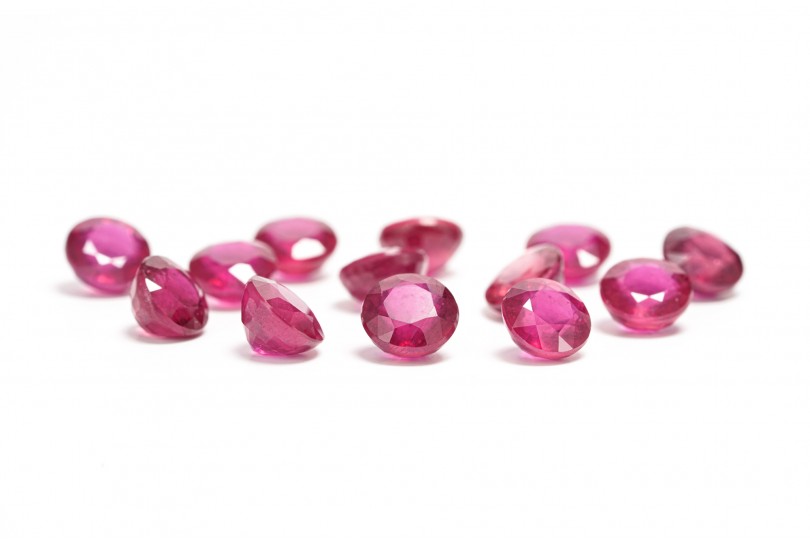Everything you Should know about Sapphire
 74830
74830Last time, you learned about the emerald, a favorite of French kings. Now we'd like to tell you about sapphire, an amazingly beautiful gemstone that is often more valuable than a luxurious diamond.
Sapphire has captured the imaginations of people for centuries with its striking blue hues and remarkable brilliance. This precious gemstone has been revered by many cultures for its beauty and symbolic significance, and has been used in jewelry and other decorative objects throughout history. From engagement rings to statement earrings, sapphire stone is a popular choice for its versatility and enduring elegance. In this article, we'll explore the history and significance of sapphire stone, its unique features and characteristics, and how to care for this cherished gemstone. Whether you're a jewelry lover, a gemstone enthusiast, or simply curious about this fascinating gem, read on to discover the allure of sapphire stone.
General Characteristics of Sapphires
| Name | Sapphire |
| Type | Corundum |
| Mohs hardness 9 | 9 |
| Wear resistance / strength | High |
| Grade | Precious, luxurious |
| Main deposits | Myanmar (Burma), Sri Lanka, Australia, Madagascar |
| Color | Color Blue, green, pink, yellow, white |
| Birthstone | September |
| Price | $$$$ |
Historical information about Sapphires
Sapphire is a celestial gemstone that has been cherished for centuries for its wisdom, righteousness, endurance, and prophetic powers. Legends tell of ancient Persian rulers who believed that the sky was painted in shades of blue sapphire, reflecting the stone's stunning beauty.
Kings and rulers adorned themselves with sapphires in pendants and rings, believing that the stone would offer powerful protection against the evil eye and attract divine mercy. Singalese people in Sri Lanka even believed that the precious sapphire could guard against the effects of witchcraft.
It's no wonder that sapphire has been coveted throughout history, with some of the most exquisite pieces known to date back to 800 BC. In the 12th century, sapphire was recognized as the best stone for priest's rings, highlighting the stone's enduring importance in religious rituals.
Today, sapphires continue to capture the imagination of jewelry enthusiasts worldwide, with their deep, rich hues and mesmerizing sparkle. From ancient legends to modern-day admiration, the allure of sapphire endures as a symbol of wisdom, protection, and beauty.
Sapphire deposits
Sapphires are found in various parts of the world, but some locations are considered more prestigious than others. This notion of prestige has a significant impact on pricing, even when the quality of the stone is equal.
For example, collectors highly value blue sapphires from Burma. Over time, gemstone enthusiasts concluded that any blue sapphire from Burma must be of superior quality, which they are willing to pay a higher price for.
However, the deposit location does not always determine the stone's worth. The quality of a sapphire is best determined by its appearance, not its source. When selecting a sapphire, it's important to prioritize its natural beauty over its origin.
Sapphire Quality Factors
When it comes to the world of precious gemstones, sapphire is undoubtedly part of the elite quartet. Alongside emerald, diamond, and ruby, sapphire reigns supreme as one of the most sought-after jewels in the market. Interestingly, rubies and sapphires share a common ancestor - corundum. That's right, these precious gems are like twins born from the same mineral.
Quality factor № 1: Color

When it comes to sapphires, the most popular colors are various shades of blue. However, these precious gems possess a fascinating color spectrum that goes beyond the blue spectrum. Sapphires come in an array of natural colors such as yellow, orange, green, white, and pink. One color you won't find in sapphires is red since it's classified as a ruby, originating from the same mineral: corundum.
As a general rule, sapphires with a more intense and uniform color fetch a higher value.
Quality factor № 2: Clarity
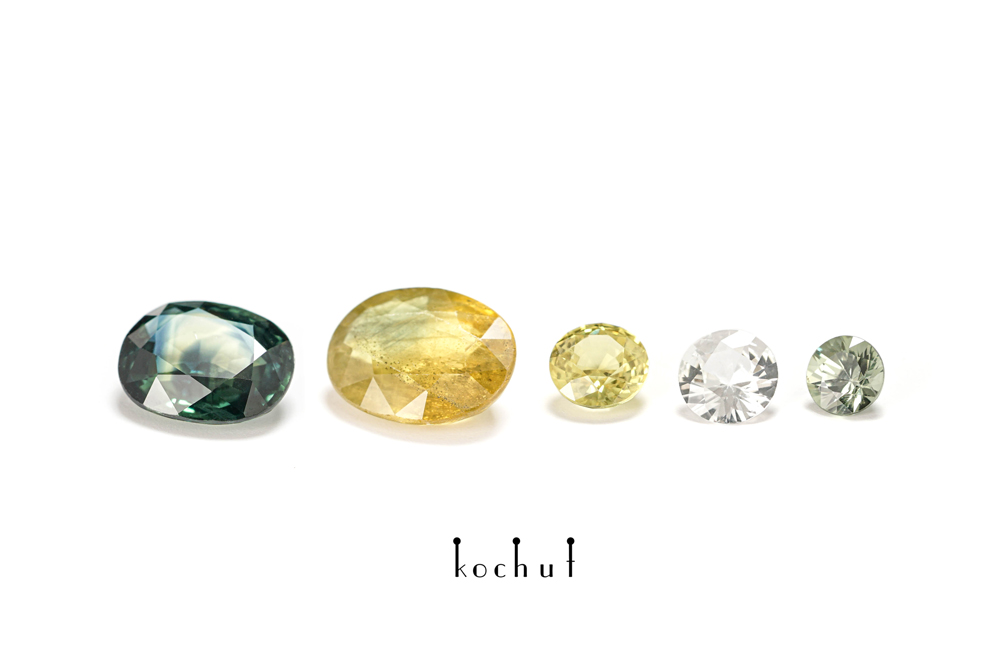
Blue sapphires usually have inclusions, yet they still tend to have better clarity than rubies. Sapphires with high clarity are scarce and therefore more valuable.
Typically, inclusions decrease the value of a gemstone, and the price may drop significantly if the inclusions impact its durability. However, sometimes, inclusions can enhance the gemstone's beauty. Some of the most expensive Kashmir sapphires contain tiny inclusions that give them a velvety appearance. These inclusions disperse light, creating an extraordinary visual effect that doesn't diminish the stone's transparency.
Quality factor № 3: Cut
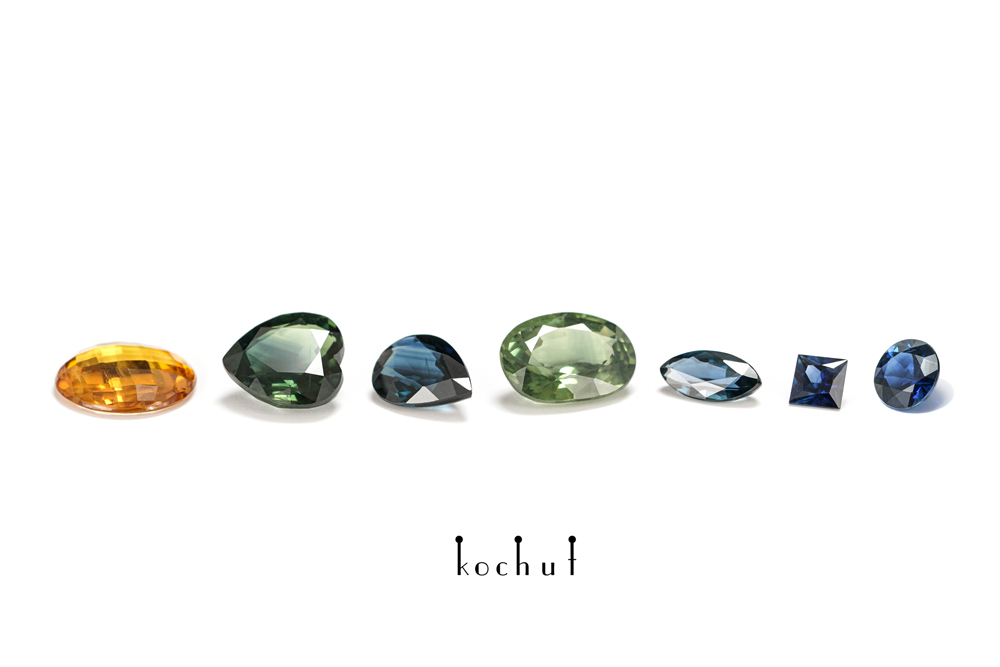
Unlike diamonds, there is no standardized cut for sapphires. A well-cut sapphire is symmetrical and reflects light under the correct angles, enhancing the stone's brilliance. The most common shapes for sapphires are oval, round, cushion, and emerald. A well-cut sapphire will showcase the stone's natural color to the fullest extent possible, making it more valuable.
Quality factor № 4: Carat weight
The carat weight, or size, of a sapphire is another crucial quality factor. Blue sapphires come in a range of sizes, from just a few carats to hundreds of carats. Larger sapphires tend to be more accessible than larger rubies, but their price per carat still increases significantly in comparison to smaller sapphires.
It's important to note that only the carat weight does not determine a sapphire's value. The quality of the stone's cut, color, and clarity, as well as the presence of any treatments or enhancements, are also important considerations.
How to wear Sapphire Jewelry
Sapphires are known for their deep and rich blue color that mesmerizes and inspires. The color easily captures attention and hypnotizes, especially when paired with well-chosen jewelry. Here are a few tips to help you look enchanting with sapphire jewelry:
- Choose your metal. The good news is that sapphires go well with any precious metal. Whether you opt for silver or gold, it doesn't really matter. Instead, focus on your outfit. For instance, if you want to wear something pink or yellow, then a gold sapphire jewelry piece would be a better choice than silver.
- The power of black. Black goes with everything, so pairing sapphire ring or earrings with a black dress, jeans, or a leather jacket over a black blouse will be a great idea. Bright blue will become an attractive detail in your outfit, so be sure to pick bold and elegant jewelry.
- Be bright. Black isn't the only color that pairs well with sapphires. If you prefer bright clothing, don't be afraid to wear sapphires regardless of the season. This means that sapphire jewelry is an ideal complement to a wardrobe full of bright spring or fall clothing.
- One ring or two? The answer to this question depends on the size of the ring. If the ring is large, you can opt for just one. After all, why clutter your hand? If it's smaller, choose two, but no more. Remember, the less, the better.
- Stick to your style. If you're heading to a serious formal event, an evening dress with a large sapphire will look beautiful. However, the same cannot be said for everyday wear. If you're getting ready for an interview, a casual stroll, or a regular business meeting, it's best to opt for jewelry pieces with small sapphire stones. It's important to ensure that the style of your sapphire jewelry matches your clothing style.
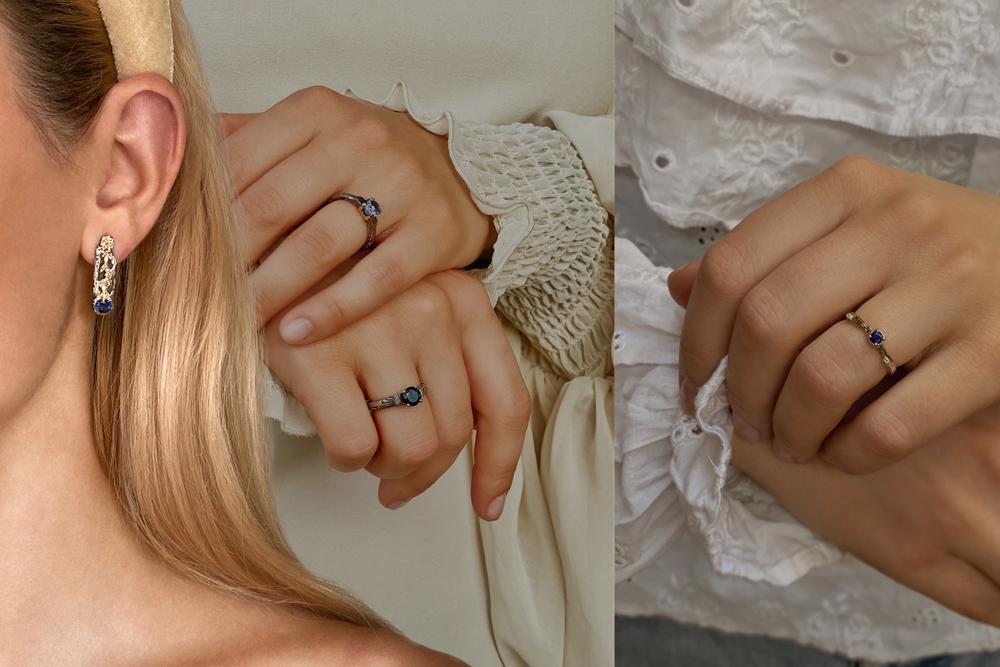
How to Care and Clean a Sapphire ring
Sapphires hardness makes it possible to clean the gem almost in any way, except for rough mechanical methods, as each sapphire may contain a certain amount of inclusions. The higher amount of inclusions, the greater risk of damaging the surface of the precious stone.
The most optimal method for cleaning sapphire jewelry is to use warm soapy water and a toothbrush with soft bristles.
Careful Storage
Remember to remove your jewelry before washing dishes or engaging in any activity that may damage the stone. Even though sapphires are hard, careless handling is still unacceptable.
Store your sapphire jewelry separately from other items. The best way to do this is in special jewelry boxes or cases. It would also be good to follow the general jewelry care tips.
Top facts about Sapphire
- The most famous royal sapphire is mounted in the engagement ring that Prince Charles gave to Princess Diana in 1981. Now, this 12-carat beauty surrounded by diamonds is worn by Kate Middleton.
- Sapphire is a birthstone for people born in September.
- It is customary to give sapphire jewelry for the 5th and 45th wedding anniversary.
- Diamond is considered the only gemstone that can scratch a sapphire.
- In 1796, Napoleon Bonaparte gave his wife Josephine an engagement ring with a sapphire and diamond. In 2013, it was sold for approximately 1 million dollars.
- The rarest type of sapphires is the pink-orange sapphire, called "padparadscha," which means "lotus flower" in Sanskrit. They are mined in Sri Lanka.
Leave a comment via Facebook:
Kochut and our partners use cookies on this website. Some of them are required for the site to function properly, but the following cookies are optional:
— cookies that analyse website usage;
— cookies used to personalize the site;
— cookies used for advertising and social media purposes;





 47226
47226
